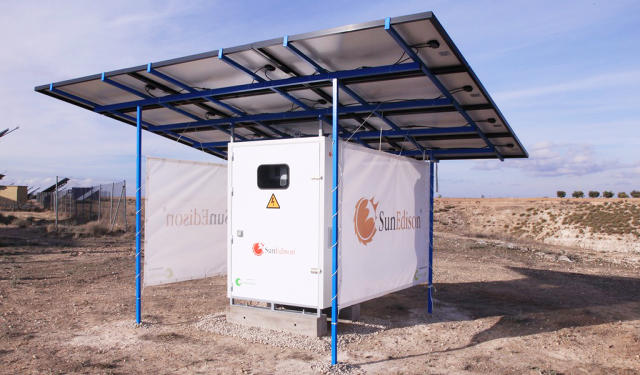A Compact Solar And Power Storage System Gets Off-Grid Communities Their Own Minigrid
Une rélflexion sur le "off-grid technologies". Plutôt que de développer le réseau électrique jusqu'à ceux qui n'en n'ont pas, l'idée est de placer ces stations aux endroits stratégiques. Efficace surtout où il y a beaucoup de soleil ... pas très esthétique ... mais bonne idée. (FAAST).
Power to dozens of households, no annoying electric company.
More than a billion people don't have electricity, and a billion more live with unreliable electricity. Getting power to these people is key to economic development, but it's a big challenge: Building out traditional electric grids to dispersed rural communities is expensive, and probably not cost-effective.
As a result, there's growing interest in off-grid technologies like home solar panels and minigrids where renewable generation is balanced with more traditional supply at a local level. "People in charge of electrification are changing their mindset as they see the solutions available to them," says Tomás García, general manager for rural electrification at SunEdison, a U.S. energy company focused on the developing world. "You can see a parallel with the mobile phone system in Africa, where people will never have a landline. With power, it's the same: There will be many people who live off-grid from the start."
SunEdison's latest piece of equipment to achieve that is the Outdoor Microstation, an all-in-one solar and battery storage device for small communities. It comes in two versions. The larger unit has 12 solar panels and provides enough power for 25 households for five hours each night (including street lighting). It stores enough power for three nights of "autonomy"—meaning those days when the sun doesn't shine enough to restore the supply.
"It allows us to bring clean, reliable, and affordable electricity to rural areas," García says.

The upper-end Microstation costs about $27,000, but comes with battery life of 10-plus years. It's the sort of nuts-and-bolts technology that makes renewable energy more reliable. By storing power when the sun is plentiful and saving it for a gloomy day, rural communities can hope to ride out most intermittency issues.
SunEdison's larger goal is to bring power to 20 million people by 2020, and in the process become a fully fledged "rural utility." Based on forecasts from the International Energy Agency, García says 80% of those without electricity will support decentralized energy—i.e., not big-grid electricity—because its costs are falling all the time.
[Top Photo: llaszlo via Shutterstock]
April 2, 2015
A découvrir aussi
- Will Tesla's Home Batteries Revolutionize Consumer Solar Power?
- Vienna set to build the world's tallest wooden skyscraper
- Facit Homes' D-Process creates buildings that snap together like LEGO bricks
Inscrivez-vous au blog
Soyez prévenu par email des prochaines mises à jour
Rejoignez les 16 autres membres
